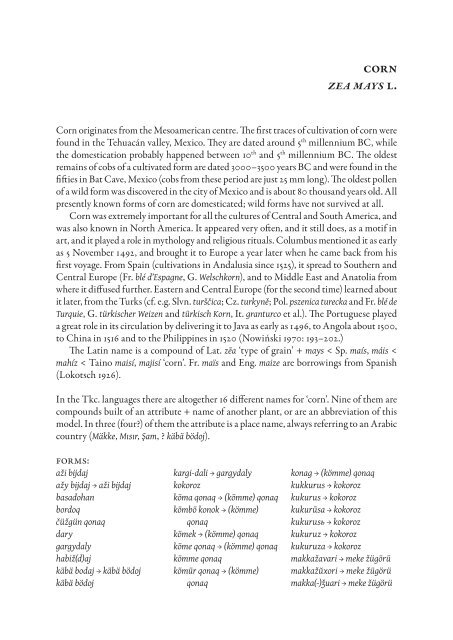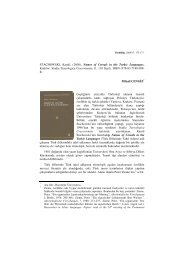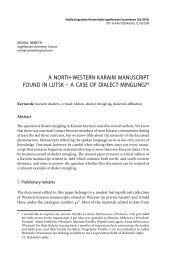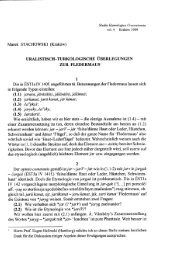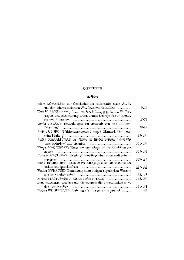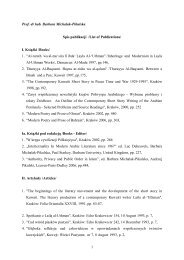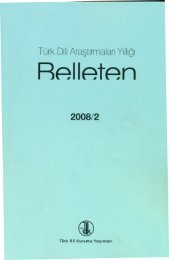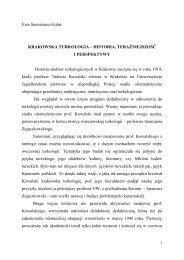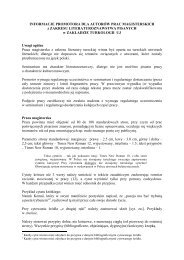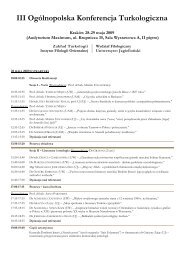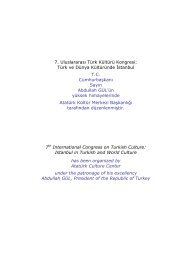Names of Cereals in the Turkic Languages - Wydział Filologiczny UJ
Names of Cereals in the Turkic Languages - Wydział Filologiczny UJ
Names of Cereals in the Turkic Languages - Wydział Filologiczny UJ
- No tags were found...
Create successful ePaper yourself
Turn your PDF publications into a flip-book with our unique Google optimized e-Paper software.
cornzea mays l.Corn orig<strong>in</strong>ates from <strong>the</strong> Mesoamerican centre. The first traces <strong>of</strong> cultivation <strong>of</strong> corn werefound <strong>in</strong> <strong>the</strong> Tehuacán valley, Mexico. They are dated around 5 th millennium BC, while<strong>the</strong> domestication probably happened between 10 th and 5 th millennium BC. The oldestrema<strong>in</strong>s <strong>of</strong> cobs <strong>of</strong> a cultivated form are dated 3000–3500 years BC and were found <strong>in</strong> <strong>the</strong>fifties <strong>in</strong> Bat Cave, Mexico (cobs from <strong>the</strong>se period are just 25 mm long). The oldest pollen<strong>of</strong> a wild form was discovered <strong>in</strong> <strong>the</strong> city <strong>of</strong> Mexico and is about 80 thousand years old. Allpresently known forms <strong>of</strong> corn are domesticated; wild forms have not survived at all.Corn was extremely important for all <strong>the</strong> cultures <strong>of</strong> Central and South America, andwas also known <strong>in</strong> North America. It appeared very <strong>of</strong>ten, and it still does, as a motif <strong>in</strong>art, and it played a role <strong>in</strong> mythology and religious rituals. Columbus mentioned it as earlyas 5 November 1492, and brought it to Europe a year later when he came back from hisfirst voyage. From Spa<strong>in</strong> (cultivations <strong>in</strong> Andalusia s<strong>in</strong>ce 1525), it spread to Sou<strong>the</strong>rn andCentral Europe (Fr. blé d’Espagne, G. Welschkorn), and to Middle East and Anatolia fromwhere it diffused fur<strong>the</strong>r. Eastern and Central Europe (for <strong>the</strong> second time) learned aboutit later, from <strong>the</strong> Turks (cf. e.g. Slvn. turščica; Cz. turkyně; Pol. pszenica turecka and Fr. blé deTurquie, G. türkischer Weizen and türkisch Korn, It. granturco et al.). The Portuguese playeda great role <strong>in</strong> its circulation by deliver<strong>in</strong>g it to Java as early as 1496, to Angola about 1500,to Ch<strong>in</strong>a <strong>in</strong> 1516 and to <strong>the</strong> Philipp<strong>in</strong>es <strong>in</strong> 1520 (Nowiński 1970: 193–202.)The Lat<strong>in</strong> name is a compound <strong>of</strong> Lat. zēa ‘type <strong>of</strong> gra<strong>in</strong>’ + mays < Sp. maís, máis


